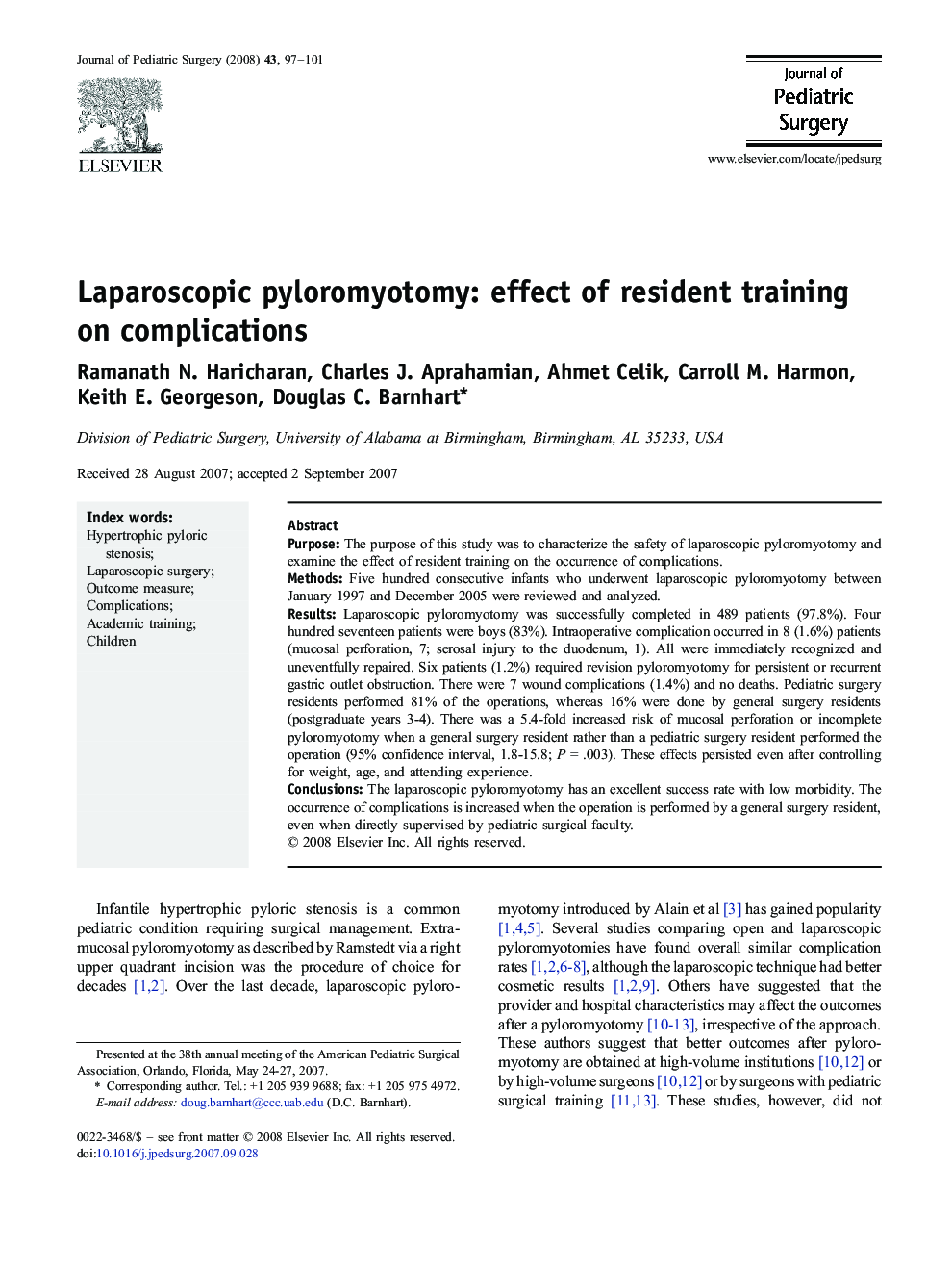| Article ID | Journal | Published Year | Pages | File Type |
|---|---|---|---|---|
| 4159198 | Journal of Pediatric Surgery | 2008 | 5 Pages |
PurposeThe purpose of this study was to characterize the safety of laparoscopic pyloromyotomy and examine the effect of resident training on the occurrence of complications.MethodsFive hundred consecutive infants who underwent laparoscopic pyloromyotomy between January 1997 and December 2005 were reviewed and analyzed.ResultsLaparoscopic pyloromyotomy was successfully completed in 489 patients (97.8%). Four hundred seventeen patients were boys (83%). Intraoperative complication occurred in 8 (1.6%) patients (mucosal perforation, 7; serosal injury to the duodenum, 1). All were immediately recognized and uneventfully repaired. Six patients (1.2%) required revision pyloromyotomy for persistent or recurrent gastric outlet obstruction. There were 7 wound complications (1.4%) and no deaths. Pediatric surgery residents performed 81% of the operations, whereas 16% were done by general surgery residents (postgraduate years 3-4). There was a 5.4-fold increased risk of mucosal perforation or incomplete pyloromyotomy when a general surgery resident rather than a pediatric surgery resident performed the operation (95% confidence interval, 1.8-15.8; P = .003). These effects persisted even after controlling for weight, age, and attending experience.ConclusionsThe laparoscopic pyloromyotomy has an excellent success rate with low morbidity. The occurrence of complications is increased when the operation is performed by a general surgery resident, even when directly supervised by pediatric surgical faculty.
